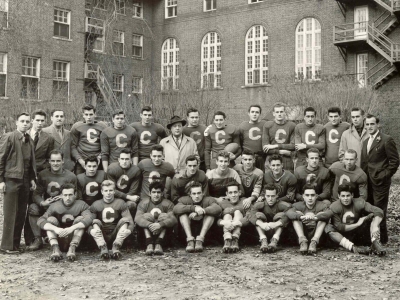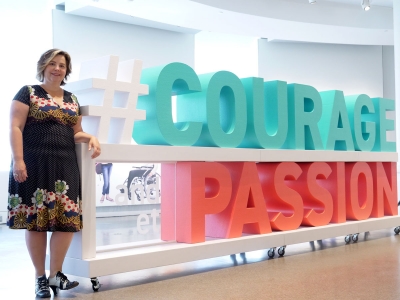By Laura Madokoro
This article is republished from The Conversation under a Creative Commons licence. All photos provided by The Conversation from various sources.
With the end of the blockade at the Ambassador Bridge and the deal brokered by the City of Ottawa to remove trucks from residential areas, it might appear that the so-called freedom convoy is winding down. But the challenge of how to proceed remains.
Trucks are still in Ottawa, just being moved to different locations, and the numerous copy-cat protests suggest that this movement has sparked something larger.
Prime Minister Justin Trudeau must not only figure out how to address the immediate situation, but also how to resolve the protest in a way that doesn’t further divide civil society and give fuel to anti-government sentiments.
One of the reasons resolving this issue is so complicated is that the protests are being organized under the banner of freedom and patriotism.
In Ottawa, people have adorned themselves and their vehicles in the Canadian flag. They have dared local residents and government authorities to challenge their patriotism.
It is a powerful strategy because they are using the very nation-building tools that states and political parties have used historically in the United States and Canada.
Principles of freedom
Freedom as a nation-building tool was perhaps most palpable in the four and a half decades of the Cold War, which pitted western democracies — “the free world” — against the communist bloc.
It was a period in which the use of rhetoric and propaganda on both sides was instrumental in shaping the conflict and the expectations that people had of the world in which they lived. As British Prime Minister Winston Churchill proclaimed in 1947, the west stood for “the great principles of freedom and the rights of man.”
The rhetoric of freedom was especially pronounced when refugee movements provided an opportunity for the United States and its western allies to gain value propaganda points.
In 1954, when Vietnam was divided into the communist-controlled Democratic Republic of Vietnam and the State of Vietnam, the U.S. Navy organized “Operation Passage to Freedom” which relocated 300,000 people from the communist north to the free south.
The U.S. Navy didn’t just undertake this operation quietly: ships were emblazoned with slogans that spoke to the spirit of the mission.

(National Archives 80-G-647057)
The ‘freedom fighter’
In November 1956, students and workers sought to overthrow the Stalinist government of Mátyás Rákosi in Hungary. The revolt was quickly suppressed, but out of that defeat emerged the undaunted spirit of the “freedom fighter,” somebody who was willing to die for their ideals, beliefs in freedom and democracy.
Although neighbouring countries — namely Austria — received the vast majority of the refugees, the U.S. and Canada resettled 38,000 and 30,000 refugees respectively, giving substance to the idea of freedom.
As an editorial in Maclean’s observed: “Our brave phrases in the UN would sound awfully hollow in Eastern Europe if we didn’t show that Canada is, and always will be, a haven for those who must flee from tyranny.”
In the U.S., Time named the “Hungarian Patriot” or the “Hungarian freedom fighter” its man of the year. The 1957 issue featured an image of a proud fighter holding a gun, with tanks and a shredded Hungarian flag in the background. The cover story declared that the freedom fighter had “shaken history’s greatest despotism to its foundations.”
A bid for freedom
As cultural studies scholar Mimi Nguyen has underscored, the idea of freedom was again used as a powerful tool following the American defeat in Vietnam in 1975 when the U.S. airlifted out thousands of people who had worked with the military or with civilian authorities.
As communist oppression worsened in subsequent years, people began to leave by boat, often in dangerous conditions, leading to an international refugee crisis by 1979.
In September 1976, Captain Bryan Oag Hunter Brown rescued 31 passengers from a leaking vessel in the South China Sea. Reflecting on their travails, Captain Brown wrote:
The story for these Vietnamese is far from over but they were very lucky. They were originally from North Vietnam and flew south when the north turned communist. Now they have flown again this time, they hope and believe the American propaganda, to a land of freedom … They are alive, free and at least have some hope.
He then mused: “How many have perished in their bid for freedom?”
Captain Brown’s words remind us of the powerful draw that the idea of freedom has had on the hearts and minds of people globally. It has propelled people to rise up, to resist, and in some cases to flee oppression.
But as a look back at the Cold War era suggests, it is also a concept that has long been politicized, and used to create enemies of those who think differently.
A divisive tool
In the context of the Cold War, it was state authorities, especially in the U.S. but also in Canada, who used the language of freedom to convince citizens and non-citizens alike of the virtue of their societies and their international interventions.
This time, with the “freedom convoy,” protesters are turning the language of freedom against their own governments. The implications, and repercussions of this, are enormous and go beyond the immediate question of how to resolve the various occupations and protests.
Governments know all too well — for it is a strategy they have used themselves — that the language of freedom is a powerful ideological tool, and a divisive one.
![]()
Monday, February 14, 2022 in The Conversation
Share: Twitter, Facebook



